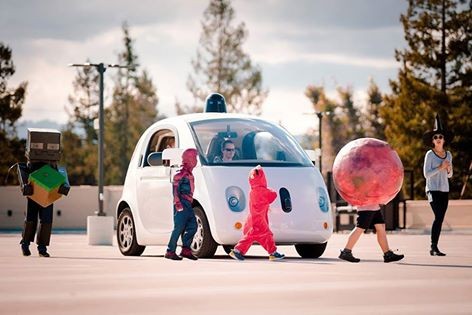Google's self-driving cars are already generally careful when people are nearby, but the tech giant revealed in an October 30, Friday blog post that its autonomous vehicles now use technology that makes them super cautious when children are around them. Their software's algorithm "understands" that the kids could behave differently from adults, and can be hard to see behind the parked driverless cars. The company's engineers asked their trick-or-treating kids in Halloween costumes to help upgrade the autos'artificial intelligence learning.
Halloween is the time of year that kids dress up like princesses, superheroes, Stars Wars or Frozen characters, and even pumpkins. This makes them harder for the smart car's sensors to recognize.
In addition, children's actions near roads can be unpredictable. This can include them darting across a street, walking onto the road to get a ball or Frisbee, or zig-zagging on a bike, according to Android Headlines.
That requires the cars to take quick evasive actions. They include choices such as shifting left or right, and hitting the brakes.
Google shared that the self-driving cars were more cautious when around the kids in Halloween costumes. However, it did not reveal what new-and-improved technology it used, or how it worked, according to Mashable.
Tesla CEO Elon Musk recently predicted that fully-functional autonomous vehicles will be available in two or three years. Some reports state that Google aims to launch its version by 2020, although a lack of industry rules and legal issues could be some major road blocks.
Nevertheless, the blog post shows that the Mountain View, California-based company is taking steps to boost the safety of its autos. In June it announced it was testing its newest smart car prototypes on United States roads.
As of July of this year, Google's self-driving car fleet had racked up 1.9 million miles during the past six years. That is equal to four round-trip voyages from Earth to the moon.



























